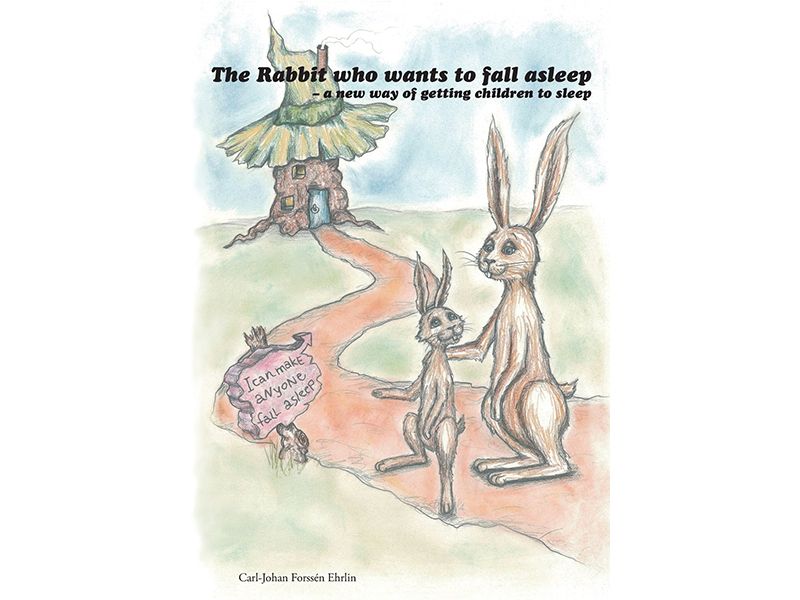Six Children’s Books That Use Psychological Techniques to Help Kids
The sleep-inducing “The Rabbit Who Wants to Fall Asleep” has become a mega bestseller. But it’s not the only story to lean on psychology
/https://tf-cmsv2-smithsonianmag-media.s3.amazonaws.com/filer/31/e8/31e8cf4a-e75a-4910-8560-58def39fff9b/kid-reading.jpg)
Currently Amazon’s number one best-selling book, The Rabbit Who Wants to Fall Asleep isn’t popular because of its riveting plot or gorgeous illustrations. Parents are buying the self-published book from Swedish author and psychologist Carl-Johan Forssen Ehrlin because it promises to use “psychological techniques” to help children fall asleep.

Experts have compared the book to a form of “gentle hypnosis,” written with sleep-inducing cadences and employing cues like loud yawning. But Rabbit is far from the only children’s book using psychology. The following books all use well-established psychological methods, from cognitive behavioral therapy to deep breathing, to help children deal with a variety of issues.
A Terrible Thing Happened, by Margaret M. Holmes
/https://tf-cmsv2-smithsonianmag-media.s3.amazonaws.com/filer/bf/14/bf14a9f6-1cd6-4071-be1c-1b7310f7571e/kidbook1.jpg)
Raccoon Sherman Smith sees an unnamed “terrible thing” happen one day. Afterwards, he has tummy aches, nightmares and nervous spells. But Ms. Maple, his school counselor, encourages him to talk about what he saw and draw pictures. This book is designed for kids who have experienced trauma, from physical abuse to natural disasters to gang violence. It works with the principle that avoidance is detrimental to mental health, as trying to suppress trauma will only cause trouble in other areas of a person's life.
Calm Down Time, by Elizabeth Verdick
/https://tf-cmsv2-smithsonianmag-media.s3.amazonaws.com/filer/43/83/43831155-c1e9-42db-b1ad-721723c88012/calmdown.jpg)
This picture book leads toddlers through evidence-based exercises designed to diffuse tantrums: deep breathing, reciting calming phrases and counting numbers out loud. Kids are meant to absorb the lessons and learn to use them as self-soothing techniques when they feel their emotions getting out of control. "One, two, three...I'm calm as can be." Parents of explosive tots give the book high marks.
Angry Octopus, by Lori Lite
/https://tf-cmsv2-smithsonianmag-media.s3.amazonaws.com/filer/07/21/0721cae3-81da-4453-abe7-82cc741dda9c/kidbook3.jpg)
Another title for raging kiddies, this colorful book teaches kids the basics of progressive muscle relaxation (think: relaxing your whole body starting with your toes and moving upwards) and deep breathing with pictures of an octopus that inflates and deflates. Written by a stress expert, it promises to help kids manage stress, anxiety and anger. Research has shown that relaxation techniques like progressive muscle relaxation and deep breathing reduce symptoms of many ailments, from depression to insomnia to chronic pain.
Ladybird's Remarkable Relaxation, by Michael Chissick
/https://tf-cmsv2-smithsonianmag-media.s3.amazonaws.com/filer/8c/ae/8cae08e1-bece-42d9-893b-cb0649e0079d/51yggby1xml.jpg)
Ladybird has a remedy for Frog's stress over chores, Flamingo's fear of bullies and Dragon's sadness about his grandpa dying. Yoga! She leads the animals through what yogis will recognize as yoga nidra, or yogic sleep, a progressive relaxation technique with copious scientific evidence for its benefits. The book is designed to “calm busy minds and young nervous systems,” giving kids a relaxation technique they can later use on their own whenever stress arises.
Sometimes I Worry Too Much, But Now I Know How to Stop, by Dawn A. Huebner
/https://tf-cmsv2-smithsonianmag-media.s3.amazonaws.com/filer/3b/98/3b985607-e265-4091-80ad-d5c80c4b4dbd/anna.jpg)
Little Anna used to worry herself sick over everything. Would her friends want to play with her at recess? What if she didn't do well on a test? Her dad told her “don’t worry, be happy,” but that didn’t work. Instead, the book takes Anna through simple, evidence-based cognitive behavioral techniques for reducing worry, teaching her that when you focus too much on a scary thought, you allow it to grow. Written by a clinical psychologist, it’s meant for kids ages 5 to 10.
/https://tf-cmsv2-smithsonianmag-media.s3.amazonaws.com/accounts/headshot/matchar.png)
/https://tf-cmsv2-smithsonianmag-media.s3.amazonaws.com/accounts/headshot/matchar.png)

